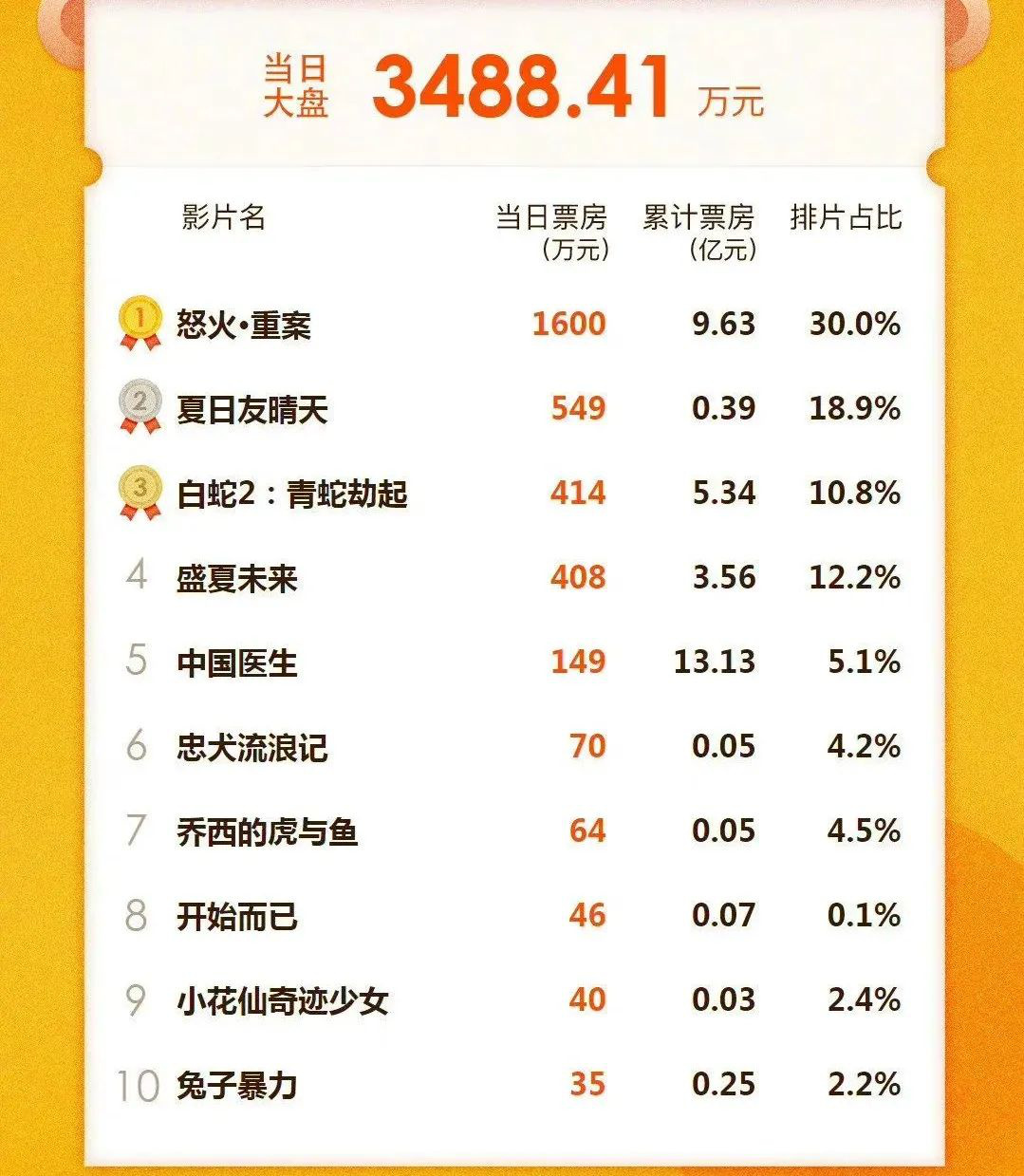Accurate appointment, peak vaccination … These service measures are so warm!








Our reporters Wu Xiaoying and Xie Jiao
"Do you know how to walk the dragon?" The giant sitting opposite asked.
The afternoon sun shines through the glass, making this lab full of coffee aroma warm and comfortable. However, the geological expert’s words are inseparable from the collapse of the earth. "In the past, there was an old saying in the countryside, that is, when the dragon passed, the mountain collapsed! Many fellow villagers have to ask their husbands for feng shui and dragons before repairing their houses. In fact, it is to see if there will be geological hazards in the site selection of building houses. The so-called dragon walking is a geological disaster such as large-scale mudslides. "
The State Key Laboratory of Geological Disaster Prevention and Geological Environment Protection of Chengdu University of Technology, where Professor Ju Nengpan is located, is to find out these geological "evil dragons", "lock" their breeding changes and try not to let them cause people and property damage.
On February 17, 2019, a landslide occurred in Group 9 of Longjing Village, Xingyi City, Guizhou Province. The automatic monitoring system deployed in this laboratory issued a red warning 53 minutes in advance, and finally achieved "zero casualties" and "zero losses" for on-site personnel.
In 2017, they also successfully warned the loess landslide in Heifangtai, Gansu Province several hours in advance.
The geological "evil dragons" that once sneaked underground and violently raged have gradually emerged and been monitored in front of China’s increasing scientific and technological level.
Why is it difficult to trace the "dragon" in the mountains?
China is one of the countries with the most serious geological disasters and the most threatened population in the world, and nearly 300 thousand hidden dangers of geological disasters have been identified.
At 6 o’clock on June 24, 2017, Xinmo Village, Diexi Town, Mao County, Aba Tibetan and Qiang Autonomous Prefecture, Sichuan Province. Before dawn, the rock behind the village collapsed and the whole village was covered in an instant, killing 10 people and losing 73 people.
Pei Xiangjun, a professor at Chengdu University of Technology, presided over the investigation of the cause of the accident. He confirmed to reporters that the mountain next to Xinmo Village was the epicenter of the Diexi earthquake of magnitude 7.5 in the 1930s, and this landslide was the "sequela" of the earthquake. After more than 80 years of development, after a light rain that did not cause disasters, it changed from quantitative to qualitative, leading to the overall landslide.
According to records, Diexi earthquake was an extremely terrible disaster. In that earthquake, Diexi ancient city fell vertically into Minjiang River. The earthquake also caused serious "internal injuries" to nearby mountains and rivers. The landslide in Xinmo Village shows that the development time of geological disasters exceeds cognition, and it is extremely slow but never stops.
Why did you fail to find this hidden danger after many times of danger removal? Pei Xiangjun analyzed that the cliff was steep and the landslide was 1250 meters higher than the affected village, so there was no way for human beings to drill. Dense vegetation blocks the surface, so it is difficult to find traces of disaster development by traditional geological exploration methods.
"Geological disasters are like beasts hidden in the mountains. It’s hard for you to see them or stab them." Yan Xiangjun said.
On August 14th, 2019, between Lianghong and Aidai Station in chengdu-kunming railway, tens of thousands of high rock masses suddenly collapsed, causing 17 people to lose contact, and no traces of geological disasters were found beforehand. Similar situations lead to the interruption of chengdu-kunming railway almost every year.
"There have been many catastrophic geological disasters in China recently, which are characterized by high position and high concealment. It is difficult for traditional investigation methods to find hidden dangers in advance." Xu Qiang, executive deputy director of the aforementioned State Key Laboratory, said that this is also the difficulty of the current geological disaster prevention and control.
Innovation and change of geological survey technology
"The mountain must be the bone of heaven and earth, and the heaven and earth in the town are giants. Such as man’s back and Xiang Liang. Give birth to a four-legged dragon … … There is a dragon in the high mountain, but it is distorted in the flat ground. Pingdilong rises from the high pulse, and rises from the star peak to the low point. "
These are not imaginary languages in tomb-robbing novels, but are from the book "Shake the Dragon Classic" in the Tang Dynasty. From today’s perspective, it is the geological structure and fold characteristics that predecessors have summarized.
Jiangyuan civilization in the upper reaches of the Yangtze River came from ancient times and left many traces in Sichuan. Yingpanshan prehistoric site, more than 5000 years ago, is located near Maoxian county. This large-scale central settlement site where the Yellow River civilization meets the Yangtze River civilization cleverly avoids three nearby earthquake fault zones.
Jian Chen, an archaeological expert from Chengdu Institute of Cultural Relics and Archaeology, believes that after several strong earthquakes and geological disasters in the past 5,000 years, the Yingpanshan site is basically intact, with only a slight landslide on the northern slope. This shows that the ancients had clear disaster avoidance theory and rich disaster avoidance practice in engineering site selection.
Nowadays, with the development of geological science, people have a professional identification and description of the development of geological disasters, that is, to explore the development degree of geological structure through engineering methods, that is, drilling sampling analysis.
At the top of Zheduo Mountain, a drilling rig kept roaring, and the designed drilling depth was 1090 meters, which was used to detect Zheduotang fault. According to Liu Zhijun, an expert from China Railway Second Hospital, the Zheduotang fault is an active fault, which has great influence on the construction. It is necessary to use a deep-hole drilling rig to reveal its material composition and properties. The survey of a 100-kilometer target requires thousands of wells with different depths.
Drilling exploration can obtain rich data, but it is not comprehensive to grasp the large-scale geological changes. Especially in the Hengduan Mountains and the Qinghai-Tibet Plateau, which have changed greatly, sometimes when a hole is drilled one meter further, the data obtained are completely different.
China’s geological survey technology has reached the crossroads of innovation and change.
From the ground to space, technology locks the "dragon"
If a single sample can’t be seen clearly, multiple samples will be sampled; If the single sample is unclear, just zoom in. With the popularization of high technology, mankind has ushered in a new era of aerospace exploration.
Chengdu University of Technology puts forward an integrated method of "satellite remote sensing+UAV mapping+drilling analysis", which first divides the risks of areas that people can’t reach; Then, through satellite remote sensing detection and drone mapping, vegetation is automatically "peeled off" on the three-dimensional terrain, the surface deformation amplitude is monitored, and the risks are identified and then put into the traditional engineering geological exploration means for detailed investigation.
From the early warning practice in Xingyi, Guizhou and Heifangtai, Gansu, it can be seen that this technology has been able to count down the geological disaster warning for 53 minutes.
In the monitoring video of Xingyi landslide in Guizhou, a dark mountain wall completely collapsed in the distance, and 53 minutes before that, the early warning alarm had sounded to inform the nearby personnel to evacuate, and there were no casualties. The process was completely under control.
This technology is also introduced into the field of railway construction. Liu Xiaohui, an employee of China Railway Second Hospital, personally experienced the iterative upgrade of surveying and mapping equipment: "In the past, surveying and mapping went up the mountain and down the deep ditch, relying on step by step. Sometimes, in order to measure a benchmark, I set out early in the morning, cut a big bamboo at a designated place, erect a measuring pole and then drive back. It is already night at the foot of the mountain … … Now realize ‘ Empty world ’ Integrated measurement, GPS, Beidou, aerial survey and drone are all involved in the measurement. "
The new technology has also been applied in engineering exploration such as Chongqing-Kunming high-speed railway. In addition to introducing and innovating new technologies such as high-resolution space remote sensing, unmanned aerial vehicle (UAV) survey and cross-hole electromagnetic tomography, China Railway Second Hospital also innovated relevant theories of karst geology suitable for high-speed rail project construction and constructed risk assessment methods. Many academicians have appraised that this complete set of technology is at the leading level in the world.
Looking for dragons in the ground, looking at dragons in the air, and locking dragons with technology. China’s geological disaster early warning capability has already made a big move.
Analysis of experts in the field of continuous fermentation of tourism storm in Xuexiang
Where is the difficulty of tourism market supervision?
Dialogue motivation
In the past few days, the tourism storm in Xuexiang has continued to ferment, and it is a wave of unrest. In fact, the public is concerned about the tourism storm in Xuexiang, not only the incident itself, but also more about what problems exist in the current tourism market. Why do the old problems still appear under the background that relevant departments continue to rectify the tourism market? Around these issues, the reporter of Legal Daily started a dialogue with industry experts.
Interlocutor
Qi Xiaobo, Assistant Director of Tourism Research and Planning and Design Center of China Academy of Sciences.
Liu Simin, Vice President of Tourism Branch of China Future Research Association.
"Legal Daily" reporter Zhao Li
Why are the questions repeated?
Reporter: One incident is a case, but two or three occurred in a short time … … Similar incidents, it is difficult to cover up the shame with individual cases. For tourists and netizens all over the country, the phenomenon that some tourism practitioners in Xuexiang earn money without conscience has failed to live up to the snow-white of Xuexiang.
Although the "heavy punch" can have a shocking effect, the key to ensuring that the tourism chaos will not resurface after the heavy punch rectification is to find out the "crux" behind the chaos.
Qi Xiaobo: The rectification of the tourism market is a long-term project that needs up-and-down linkage, multiple efforts and concentrated breakthroughs. In addition, the tourism market involves a wide range, the quality of tourism service personnel is still uneven, the understanding of local market management is not in place, and there are still empty areas in management and control, which leads to the phenomenon of "cheating customers".
Many scenic spots are not well managed due to different management attributes, different employment groups, inertia thinking and luck psychology; At the same time, it is difficult to break the long-term solidified interest chain of the beneficiaries of scenic spots, which is also an important reason for the market problems. Only after the accident, the local government will learn from a painful experience and make a determination to carry out rectification, which shows that the local tourism department has less authority or management is not in place. Therefore, it is necessary to establish a long-term supervision mechanism, improve the tourism police and the tourism court from the system, start with supervision, form a long-term linkage mechanism from top to bottom, and strengthen the local tourism law enforcement and supervision departments, so as to truly form an effect.
Liu Simin: The problems in the tourism industry are common problems in social governance, and they are inevitable problems due to over-reliance on administrative law enforcement and administration. The problem of tourism cannot be seen in isolation. The problem of tourism development is an objective reflection of the stage of social development. The essence of market economy is honesty economy and rule of law economy. Operators and consumers should stress honesty, and then adjust the interest relationship through the rule of law, rather than relying on administrative law enforcement. Because for subtle market economic activities, administrative law enforcement is often powerless. Furthermore, tourism professionals has a low threshold, and its average quality is not high, so it is easy to have problems. The improvement of tourism depends on the improvement of the whole social environment.
How to promote supervision
Reporter: We have noticed that some insiders have suggested that the current tourism market supervision system has been initially established and gradually improved, but the supervision system for supervision has not been fully established. What is the effect of market supervision? Is the supervision compliant? How to solve the regulatory problems? With the accountability system and responsibility list, supervisors can truly turn their sense of responsibility into action and implement strict supervision to the end.
Qi Xiaobo: In the past two years, the National Tourism Administration has paid special attention to the supervision of the tourism market and issued a series of rules and regulations. Especially since the promulgation of the Tourism Law, there are laws to follow. At the same time, we should also realize that the strength and authority of law popularization still need to be strengthened. The current supervision system does tend to be perfect, but the main body of supervision is still vague, and the supervision authority of the tourism department itself is insufficient. Therefore, it is necessary for local party committees and governments to really separate the main body of tourism law enforcement from the tourism sector, with authoritative supervision and law enforcement capabilities.
At the same time, we should also realize that it is very important to establish a perfect and effective tourism supervision system. However, in view of the fact that there are many departments involved in tourism, it is basically impossible to establish a completely independent supervision institution. It is even more necessary for multi-level government departments to set up tourism supervision in the existing supervision institutions to undertake the ownership and work of joint supervision, so as to better supervise the effective implementation of tourism supervision and law enforcement.
Reporter: There is also the human factor. In recent years, China’s tourism market has developed rapidly, scenic spots have been increasing, and the number of tourists has doubled. However, incongruously, the growth of the number of tourism supervisors is limited, which can not meet the needs of actual supervision, and the supervision of the tourism market is becoming more and more difficult.
Qi Xiaobo: At the local level, the specific staff of tourism supervision overlap, so it is necessary for governments at all levels to actively strengthen the tourism law enforcement departments and increase the number of supervisors. However, given the local staffing restrictions, it is very difficult to better solve the exclusive personnel. Therefore, it is more necessary to take tourism supervision, law enforcement and supervision into account when the relevant departments have set their authority. At the same time, it is necessary to actively introduce the practice of regional cross-supervision, especially in the tourist season, to deploy at the provincial level, cross-regional and cross-enforcement, effectively deploy the supervision and supervision of the tourism market, and better supervise the problems in the tourism market.
Reporter: To implement strict supervision, at present, we put a lot of energy into "punishment afterwards", and the handling of tourists’ complaints accounts for the majority. The tourism department has carried out seasonal supervision from "spring action", "summer rectification" to "autumn and winter battle", and the "climax" part is before the big tourist holiday. This normal, dynamic and preventive regulatory measure has achieved obvious results.
Liu Simin: We should provide tourists with a good tourism environment and a good legal environment. Now the focus of law enforcement is to crack down on unreasonable low-cost travel. In my opinion, we can crack down on unreasonable low-cost travel, but the focus should be shifted to cracking down on forced transactions and counterfeiting.
There are crimes of forced trading and fraud in China’s laws. At present, there are so many vicious incidents in the tourism industry, but they have not been dealt with according to these laws. In my opinion, it is necessary to improve the law against compulsory trading and counterfeiting, which harm the interests of tourism consumers, and clarify various penalties according to different degrees.
In addition, I think it is necessary to increase the intensity of punitive damages, and at the same time, we should do a good job in the connection between consumer protection law, criminal law, tourism law and other laws.

Epidemic hunting, little publicity, Pixar’s new workLuca was quietly released at the worst time of summer.On the same day, it followed the "Anger Serious Case" and becameBox office runner-upHowever, the diversion of streaming media in advance and the epidemic situation have also hit the box office, and the expected box office of less than 100 million is obviously completely contrary to Pixar’s expectations. In addition to the box office, Luca’s score was as low as 7.4, which almost became the most dazzling presence in Pixar’s production.

For Luca’sdispute, too much.Semi-concentrated on "metaphor" and plot.Pixar’s gold-lettered signboard makes most viewers always have high expectations for the film. Obviously, Luca didn’t directly hit the cool point of this part of the audience. The audience can only write in the comment area that "it’s a little mediocre, the higher the expectations, the higher the disappointment."

However, is Luca really so miserable? In fact, the author believes that this part of PixarOn the contrary, "Sunny Summer" achieved the most difficult thing in commercial movies, and abandoned "meaning" to pursue beauty and purity..

Pure beauty, realistic friendship
Although the completion of the plot is not as good as that of "Journey to the Dream Ring" and Soul, Luca returned to the simplest, pure and straightforward way, and told two touching mother propositions-Friendship and growth.
As the most obvious emotion in Luca, friendship has been deepened and extended in reality in the movies. At the beginning of the film, the director showed the audience the beauty of friendship in the universal sense with a short pen and ink-Peer identification.
When Luca couldn’t get the value recognition and free permission from the elders, it was Alberto who brought Luca to a new world with freedom and concern. Similarly,When Luca "fell", it was Alberto who held him firmly., gave the elders can’t give delicate care.

Through the description of Luca’s original family in the previous plot, we can see that the source of tragedy in Luca’s character comes fromElders’ "blocking" and imprisonment in the name of love. Freedom is Luca’s obsession. It is actually very simple to get rid of this dilemma, that is, to give Luca freedom and the opportunity to "join the WTO". However, when she really got freedom, Luca was timid.Return to the same value identity as parents-fear of danger.

This natural contradictory plot truly and realistically depictsDifficulties that young people will encounter in the process of entering the society.. When solving this dilemma, the inertia thinking of the elders is "protection", but it is true that,What Luca needs is not protection, but to inspire courage from the inside to overcome the cowardly and tragic nature and grow up..
At this time, Alberto took Luca out of the comfort zone with the phrase "Overcoming the inner Bruno", which is a typical emotional connection with peer recognition. All this brightness is the medal of value of "friendship".

However, the most precious thing for Luca is not to sing praises to the beauty of friendship through a rose filter.It is bloody to show the most "realistic" side of friendship.. When Luca and Alberto had a disagreement, Alberto fumed and touched the water in front of Julia. Luca didn’t help Alberto as hard as usual, but shouted, "There is a monster."

this"Imperfect" protagonist imageIt’s beautifully shaped. The director didn’t portray the protagonist as a "Bai Lianhua" like the stereotype of a commercial film. Instead, he conveyed a cruel and realistic truth about friendship and life through Luca’s "exclusion" behavior of being an "alien" and not doing anything for his friends.Friend, I can’t walk with you all my life, I can only walk through one journey..

When Alberto gave his all in friendship, Luca’s betrayal was a realistic injection, which pierced all utopias that belonged to the second dimension, hitting the tears directly, cruel and real. After all, friendship also has a "honeymoon period". After years of helping each other and sharing hardships, whether we can "share happiness" and properly resolve peer competition has become the touchstone of friendship and growth.This is Luca’s achievement and uniqueness.

Eternal but cruel growth proposition
The natural contrast of the "imperfect" protagonist makes Alberto’s role image more three-dimensional.If Luca’s growth is an experience of identity recognition and "breaking the game", then Alberto’s growth is a pattern and redemption based on "great love".
Because he was caught in the rain, Alberto tried his best to hold an umbrella for others.. Beneath the natural outward appearance, there is a more broken childhood, lacking the ability of love and reconciliation, but doing everything to help Luca lick her wounds and regard this heavenly friendship as the only light in the gloomy loneliness.

After being betrayed by Luca, he still chose to "forgive" Luca, which is the most passionate chapter in Albert’s growth hymn. Because this "betrayal" made Alberto understand,Identity and worry about joining WTO are the only obstacles in their friendship.Therefore, as long as you accept your identity first, you can cross this psychological barrier. At the same time, the friendship with Luca is also a bridge for the fishermen to join the WTO. This natural curiosity is the same as that of The Little Mermaid.A kind of romance with sadness.

It is true that all this is interpreted by the viewer, but behind this series of "instincts" is still the backbone support of tolerance, courage and great love, precisely because of Alberto.The brave act of jumping out of the mindset and enjoying the detachment of pain.It will affect Luca to accept herself and identify herself more quickly and pave the way to utopia.

There is such a realistic theme in Luca’s growth hymn.The first essence of growth is "acceptance". First of all, accept yourself. Self-identity is the source of superciliousness, and the tragic root of the two protagonists’ characters is their inability to accept themselves. On the basis of accepting self-identity, embracing everything in the world is a "big pattern" that needs to be experienced.

Luca’s rare and precious thing is purity.The feelings, love and hate in the movie are pure.You can make friends because of common wishes, lose friends because of drifting away, and reunite with friends because of growth. The acceptance and bravery in movies are also pure.Fear is just because you don’t understand.When malice and danger are eliminated, we can also go to the end of family fun.

Although the overall story line is still the realistic tone, Luca’s ending is very "fairy tale" and utopia. Everyone in the town quickly accepted the identity of the fisherman and encouraged more fishermen to accept themselves and live happily.Perhaps this kind of beauty only exists in fairy tales, but the tolerant pattern and attitude are still what people who read movies need to learn from..

Overcome cultural barriers and show the beauty of regional characteristics
The most exquisite highlight of the film is the translation of the title.. The original is named after the protagonist’s name, which is a choice that is neither wrong nor brilliant. However, Luca’s translation includes all the eye-catching elements of the film-midsummer, sunny days and friendship, and continuous reading is more literary and catchy.A clear, warm and beautiful picture comes to my eyes..

In recent years, althoughThe concept of "globalization" is tightening up.However, Pixar’s creation gradually stepped out of the traditional western aesthetic and cultural system and began to use a peaceful perspective of "de-gaze".Excavate cultural elements with regional characteristics.
The Travel Notes of the Dream Ring digs out the meaning of affection and existence from the Day of the Dead in Mexico, and the colorful South American world built by paper-cutting and candles is even more fascinating.
The short film Bao Bao Bao, which won the Oscar, touched every sympathetic audience with the social issues of "raising children" and "supporting the elderly".

In Luca, abundant sunshine in southern Italy, lively towns, blue sea, opera, passionate and emotional Italian, healthy and sunny girls, coastal mountain roads and bicycles are the main catalysts for making movies lively and lively.In the state of "post-epidemic", we can still have a visual journey around the world. The more national it is, the more special it is..

Like Soul, the overall tone of Luca is stillThe Realistic Cure Direction in Post-epidemic Period. If the Journey to the Dream Circle was a successful life of actively creating meaning, desperately striving for, catering to and exploring "meaning",Pixar’s two new works after 2020 are "dispelling meaning".
After all, the probability of success is never 100%. Where there are people, there will be competition, there will be failure when there is competition, and there will be loss when there is failure. Cruelty is always the background color of reality. In the shadow, we should also learn how to accept mediocrity or even failure.Reconciliation with reality and yourself, after all, the road of life is not just static..

Admittedly, Luca is still covered with numerous controversies.For example, the overall story completion is not high. The plot is polished, slightly old and dull.The turning point at the end is a little hasty and unconvincing, so we can’t use "cool" and "reasonable" to attack most of the audience. At the same time, the shaping of other roles except the protagonist is also rigid and superficial, which is not as good as Soul’s complete realization in terms of conception and pattern.

However, in this bleak and dull late summer, Luca still uses itThe purest way shows a kind of beauty that is the most difficult to pursue in modern society.Just like a basic ice cream, it is simple, pure, summer-relieving, not sticky, and you can easily recall the taste.
This year’s government work report proposes to strengthen the management of solid waste and new pollutants. At the press conference held by the Ministry of Ecology and Environment on the 30th, Ren Yong, Director of the Solid Waste and Chemicals Department of the Ministry of Ecology and Environment, explained the treatment of new pollutants.
Question: What is a new pollutant?
Ren Yong introduced that from the perspective of improving ecological environment quality and environmental risk management, new pollutants refer to those toxic and harmful chemical substances with the characteristics of biotoxicity, environmental persistence and bioaccumulation.
At present, there are four kinds of new pollutants that are widely concerned in the world: persistent organic pollutants, endocrine disruptors, antibiotics and microplastics.
Second question: where is the new pollutant "new"?
Ren Yong said that the reason why new pollutants are called "new" is, on the one hand, relative to familiar conventional pollutants such as sulfur dioxide and nitrogen oxides; On the other hand, there are many kinds of new pollutants, and they may continue to increase.
Three questions: where is the difficulty in controlling new pollutants?
The characteristics of new pollutants determine the difficulty of their treatment. Ren Yong said that the new pollutants have five characteristics: First, the harm is more serious. New pollutants may be harmful to organs, nerves, reproductive development and other aspects, and their production and use are often closely related to human life, which poses great risks to the ecological environment and human health.
Second, the risks are relatively hidden. The short-term harm of most new pollutants is not obvious, but once their harm is found, pollutants may have entered the environment through various channels.
The third is environmental durability. Most of the new pollutants have environmental persistence and bioaccumulation, which are difficult to degrade in the environment and easy to accumulate in the ecosystem, and can be accumulated in the environment and organisms for a long time.
Fourth, the source is extensive. China is a big country in the production and use of chemical substances, with tens of thousands of kinds in production and use, and thousands of new chemical substances are added every year, and their production and consumption may have environmental emissions.
Fifth, the governance is complicated. For persistent and bioaccumulative new pollutants, even if they are discharged into the environment at a low dose, they may endanger the environment, biology and human health, which requires a high degree of treatment.
He pointed out that new pollutants involve many industries, and the industrial chain is long. It is difficult to research and develop substitutes and alternative technologies, and it is necessary to coordinate multi-sectoral and cross-disciplinary governance and implement life-cycle environmental risk management and control.
Four questions: How to control new pollutants?
Ren Yong introduced that the general idea of new pollutant control is to "screen" and "evaluate" new pollutants that need to be controlled by screening and evaluating the environmental risks of toxic and harmful chemicals. Then implement the whole process control of key new pollutants, including the source prohibition, process emission reduction and terminal treatment of production and use. The Ministry of Ecology and Environment, together with relevant departments, is studying and formulating an action plan for the treatment of new pollutants, and put forward the overall requirements, main objectives, action measures and safeguard measures for the treatment of new pollutants in China during the 14 th Five-Year Plan period.
be relevant
The treatment and disposal capacity of medical waste and medical sewage in medium and high risk areas is sufficient.
Recently, there has been a cluster COVID-19 epidemic in many places in China. Ren Yong, director of the Department of Solid Waste and Chemicals of the Ministry of Ecology and Environment, said on the 30th that from the dispatching situation, the treatment and disposal of medical waste and medical sewage in the middle and high-risk areas in China are stable and orderly, and the treatment and disposal capacity is sufficient.
Ren Yong said that the Ministry of Ecology and Environment regularly conducts centralized dispatching for areas with medium and high risk levels. Since the beginning of this year, daily dispatch has been implemented to guide and urge key areas to strictly implement the "two 100%" work requirements, that is, 100% full coverage of environmental supervision and services of medical institutions and facilities, and 100% full implementation of timely and effective collection, treatment and disposal of medical wastes and medical sewage. He said that about 70% of the cities (states) and municipalities directly under the Central Government involved in high-risk areas in China have a daily disposal load rate of medical waste below 50%, and the medical waste involved in the epidemic has been cleared daily. In addition, it has a relatively sufficient coordinated emergency response capability, which can be activated at any time. In terms of medical sewage, the Ministry of Ecology and Environment guides all localities to do a good job in environmental supervision of medical sewage and urban sewage treatment. At present, the sewage treatment capacity of designated hospitals and urban sewage treatment plants meets the demand and operates normally.
This group/Xinhua News Agency

Chen Xia’s father left two photos of his daughter.
According to Huaxi Dushi Bao, the mother of Chen Xia, the murdered female anchor, said that because of her real estate program, her daughter often knew many people outside, but she was so lofty that most people simply disdained her. My daughter is also very low-key and won’t get into trouble.
My friend Huahua (a pseudonym) thinks that because Chen Xia is a female anchor, this special status makes many people look at her with colored glasses.
In the eyes of colleagues: high-profile life is very complicated.
Chen Xia’s colleague said that Chen Xia is very high-profile, likes famous brands, and always tells others that a hairpin costs more than 3,000 yuan, and necklaces and bracelets are all Cartier. Shortly before the incident, Chen Xia took a week’s annual leave, traveled to Shenzhen and Hong Kong, bought some things, went to the office and told her colleagues that she had bought a new skirt, which cost more than 3,000 yuan.
A man said that Chen Xia was "famous" because of its complicated life.
Cx708, these characters, must imply the fate password. Chen Xia’s good friend Huahua thinks so.
Two years ago, when Chen Xia replaced Beijing Hyundai with a cool red beetle, he chose Chongqing CCX708 as the license plate number. Two years later, around the early morning of July 8th, Chen Xia was brutally killed in her beetle car, and a hole was stabbed in her throat with a knife.
Chen Xia, the anchorwoman of Chongqing Yongchuan TV Station, is famous for her beauty and wearing Cartier. But in the end, he was dumped by gangsters in a lonely small ditch in the countryside of a neighboring county.
Fate is so embarrassing. The police immediately announced that two gangsters had been arrested for robbery and murder. However, it attracted local people to question: Why kill people cruelly? Why didn’t you rob the car? Why not take away the expensive jewelry?
Chen Xia’s mother said that Chen Xia had just received a lot of money from others, about 150,000 to 60,000, which was completely looted by robbers.
The identity of the female anchor, coupled with the fact that there is no specific case, makes online rumors fly. At present, there are millions of searches about Chen Xia.
Lost: Daughter who didn’t go home
On the evening of July 7, He Jiaming and her husband Chen Changshui watched TV in the living room, waiting for their baby daughter to come home.
At this time in the past, my daughter opened the door and called out "Mom", or looked at her father in the living room and asked "Dad, where’s Mom?" But tonight, I haven’t seen my daughter yet.
At 11: 09, He Jiaming called his daughter, but the phone didn’t answer.
She texted her daughter: "Don’t come back if it’s too late." Daughter Chen Xia has a house in Sunshine Shangcheng, but she usually lives with her parents in the dormitory of the old party school.
Eleven minutes later, Chen Xia called and his voice was urgent: "Mom, what’s the matter?" "You sleep, you will be back soon." She may not have seen her mother’s text message.
On the morning of the 8th, He Jiaming got up and saw no one in her daughter’s bedroom. She thought her daughter lived there too late last night and wanted to call. Chen Changshui told her not to call, and young people had to sleep late.
At 10: 30, Chen Changshui bought a fish, and her daughter likes to eat fish in clear soup. Call the past, the phone is turned off, and the other 133 phone can’t be connected. They thought their daughter would call when she woke up.
At 12 noon, He Jiaming called his daughter again, but it still didn’t work, and his heart skipped a trace of ominous. "I’m afraid it’s wrong. I still can’t get through!" The old couple went downstairs, took a taxi to Chen Xia’s home in Sunshine Shangcheng, opened the door and went in. No one was there, the beds were neatly stacked, and the red Beetle car downstairs was gone.
He turned around and ran to the TV station to find the director Yi Tingbing. Yi Tingbing is in a hurry: "We are looking for her, too. It’s her show soon, and no one is there!" "
Murder: the corpse is in a ravine dozens of kilometers away.
At 4 o’clock on the 8th, He Jiaming didn’t find Chen Xia and went to the xuan hua police station to report the case.
At 7 pm, Yongchuan TV reported the case to Shuanglong Police Station.
Dozens of kilometers away, there is a stream in Group 1 of Chepu Village, longshui town, Dazu County. There is a bridge on the stream, which connects Longshui to the main road of Tangxiang Street. The road is open and the sidewalks on both sides are brand-new. Every morning, there are always some people running here.
On the morning of the 8 th, it was dawn, and the cleaner Yang Jiamo heard a runner shouting on the bridge: "Come and see, is it a person below?" A white figure was lying in a gully 8 meters below, with its head submerged in the water, like a model for selling clothes. Through careful identification, it is clearly a person! Face sideways, clothes are faded to the chest, and the head is wrapped from behind. My hands were tied with bright tape, and my shoes were gone. I was wearing a skirt floating in the water and wearing jewelry.
The police arrived soon. Later, villager Chen Mingliang found that there was a lot of blood on the edge of the road 10 meters away from the bridge head. The blood extended all the way to the bridge, and there was blood on the bridge railing. Judging from the blood, the body was dragged to the bridge and then dropped into the stream from the bridge.
While searching for the source of the body, Dazu police found that Yongchuan Chen Xia was missing.
On July 9th, the deceased was confirmed to be Chen Xia by comparing photos of relics. Chen Changshui went to the funeral home and found that her daughter’s throat was stabbed with a sharp knife! How cruel!
On the same day, on Sanchakou Street, 3 kilometers away, a red beetle car stopped in front of Gate 412 of Yongyi Road. Someone saw a white handbag in the car.
For several days, people came to watch this rare car in the local area.
At 11 o’clock on the evening of the 11th, the police rushed here to take photos and trailer. The police told the onlookers that a murder case had occurred. It was discovered that there was suspected blood on the rear wheel of the car.
On the morning of the 12th, the police took a man to identify the scene. The man was wearing anklets and handcuffs. He was very small and looked like a child.
Subsequently, the police announced that two suspects of robbery and murder had been arrested, but the case has not yet been released.
Mystery: rumors caused by identity
The identity of Chen Xia’s female anchor, rumors also spread wantonly on the Internet.
Chen Xiasheng was born on May 20th, 1982. He finished junior high school in Yongchuan Middle School and was admitted to xuan hua Middle School. After graduation, he was admitted to Tianjin Normal University’s International Women’s College for broadcasting and hosting. In 2005, I officially worked in Yongchuan TV Station and hosted many programs. Before the incident, he was in the "Intercity News" column and concurrently served as a radio host.
Later, Chen Chang Shui and his wife spent money to buy their daughter an 82.16m house in Sunshine Shangcheng. My daughter first drove a modern car, but later she wanted to change cars. Chen Changshui bought this red beetle for her.
After the incident, He Jiaming burned all her daughter’s things, except for two art photos. "The clothes burned have hundreds of thousands of dollars."
It is reported that the two gangsters had been waiting in the local parking lot for many days before the incident. On the night of the incident, they first saw Huahua and were ready to start work, but Huahua was alert and did not start work. After waiting for an hour, I found Chen Xia, so I got on the bus and robbed and killed people. They forced Chen Xia to tell the password of the bank card, then took some money from Yongchuan, and then went to Wanzhou to spend money on a lot of gold, silver and jewelry.
He Jiaming said that Chen Xia had just received a lot of money from others, about 156,000, which was completely looted by robbers. Some people also questioned why the robbery did not rob the vehicle. Why didn’t you bury the body? On the internet, some people speculate that her death is related to local dignitaries, while others say that the female anchor has a complicated relationship and may be a love killing. He Jiaming denies all these speculations. She feels that her daughter’s feelings with her are like sisters, and she has nothing to say. If there is such a situation, she will definitely disclose it to her.
In 2012, Chen Xia got married to her classmate, a divorced man. However, because the other child objected, the two divorced again and made an appointment to remarry after the child graduated from junior high school. After the incident, the former son-in-law also came to Chen Changshui’s house to cry and blame herself for not getting divorced.
He Jiaming said that when doing real estate programs, her daughter often knows many people outside, but her daughter is also very low-key and will not get into trouble.
However, contrary to what He Jiaming said, Chen Xia’s colleagues said that Chen Xia was very high-profile and liked famous brands, and he always told others that a hairpin cost more than 3,000 yuan, and all necklaces and bracelets were Cartier. Shortly before the incident, Chen Xia took a week’s annual leave, traveled to Shenzhen and Hong Kong, bought some things, went to the office and told her colleagues that she had bought a new skirt, which cost more than 3,000 yuan. A man said that Chen Xia was "famous" because of its complicated life.
Huahua has a good relationship with Chen Xia. She hates online criticism very much. "Yes, she is very high-profile. She likes to wear famous brands and go shopping, but she is not bad. "I can only say that she does have a lot of contacts and knows a lot of people, but it’s not like what the Internet says." Huahua thinks that because Chen Xia is a female anchor, this special status makes many people look at her with colored glasses.
Community monitoring took the last picture.
Chen Xia was with Cheng Jun before he lost contact.
Cheng Jun is a few years older than Chen Xia. She is the wife of a real estate agent in Yongchuan and the dry sister of Chen Xia.
Chen Xia has been an anchor in Yongchuan TV station for nearly 10 years, and has hosted many columns such as "Living in Yongchuan", "Rural Hometown" and "Intercity News". As a public figure, he is quite famous in Yongchuan. Hosted the real estate column and met some real estate developers, including Cheng Jun and her husband. Chen and Cheng have been in contact for 10 years and have become dry sisters.
Chen Changshui knew Cheng Jun’s father. He used to be the director of Yongchuan Finance Bureau, but later he was sentenced for an accident.
At 1 pm on the 7th, Cheng Jun took the driver, drove to Sunshine Shangcheng, and took Chen Xia to Chongqing. Chen Xia went to Chongqing this time for two purposes: to go to the hospital to see his health and want to have children, but he is in poor health and needs to be supplemented with progesterone; At the same time, go to my cousin who is the boss of a bank and help Cheng Jun to handle a loan of 10 million yuan.
When she came back from Chongqing that day, Cheng Jun’s driver sent her and Chen Xia back to Sunshine Shangcheng. The two men walked into the "fat cowboy" at the gate of the community. Fat cowboys belong to high consumption in the local area, and Chen Xia often comes. The waiter said that Chen Xia usually came with colleagues or sisters, and once or twice she was seen coming alone with a strange man. Chen Xia, the host, is beautiful, but he always smiles at the waiters and is kind to people.
After eating in the fat cowboy for about an hour, they went to Chen Xia’s home and chatted while watching TV. At about 11: 30 in the evening, Chen Xia and Cheng Jun came out of the community and left the last shadow in the community surveillance video.
Two people take the car separately, Cheng Jun to the left and Chen Xia to the right. But Chen Xia lost contact.
Chen Xia’s car was parked in the outdoor parking zone in front of the Industrial and Commercial Bank of China on the right side of the community, which is the parking space where friends often park. There is a tree next to the parking space, and behind it is a green shrub half a person’s height, and the line of sight is blurred at night.
When Huahua found that the parking space was occupied, it was 10: 30 pm on the 7 th. This red beetle, she knew it was Chen Xia’s. So she parked her car diagonally opposite the beetle. After the car stopped, Huahua saw two men on the street. The man in white was standing by the road, while the man in black was crouching a few meters away. Seeing Huahua driving in, the man in white walked up to the man in black. After saying a few words, the two men came towards Huahua’s car.
Huahua felt that the two men were not like good people, so she quickly locked the car and looked up at the man in white for a few seconds. The mother holding the child in the back just opened the back door, and the two men then left.
The next day, Huahua saw Chen Xia’s red beetle drive away.
CCTV News:Today is World AIDS Day, and the knowledge about HIV has been popularized by Yang Bilian, chief physician of dermatology department of Oriental Hospital of Beijing University of Chinese Medicine.
First of all, we need to know the transmission route of HIV. There are four main transmission routes: sexual transmission, intravenous drug injection, mother-to-child transmission, injection or input of contaminated blood products.
Secondly, once HIV infection is found, please don’t panic too much. People infected with HIV will not die immediately, and the survival time of AIDS patients varies from person to person. According to the research, the subtype of HIV virus infected, the number of viruses introduced into human body, personal genetic and health differences and medical quality all have an impact on the survival time of AIDS patients.
A healthy person generally goes through four stages from HIV infection to death.
The first stage is called the initial stage of infection, also called the acute infection period of AIDS, also called the "window period". After infection, a small number of infected people will have flu-like symptoms, such as fever, pharyngitis, rash, lymphadenopathy, etc., and then these symptoms will disappear. These symptoms usually appear within 2-4 weeks after infection, and it takes an average of 6 weeks to 3 months before the infection can be confirmed by blood test.
Therefore, if you have recently had dangerous activities and the following symptoms, please be sure to call a doctor: persistent low fever, fatigue, laryngitis of unknown cause, sudden weight loss of more than 10%, headache, nausea, muscle and joint pain, night sweats, persistent diarrhea and rash.
The second stage: the incubation period of AIDS. From HIV infection to clinical manifestations, this period of time is called incubation period, which is about several months to several years. At this time, patients are called "HIV carriers". On the surface, most of the infected people are healthy, which is no different from normal people. However, the incubation period is not a static period, and it is not a safe period. The immune system in its body is fighting silently with the virus, and the virus continues to multiply, which has a strong destructive effect.
The third stage: pre-AIDS. Pre-AIDS refers to a period of time when AIDS-related symptoms and signs begin to appear after the incubation period until it develops into a typical AIDS. At this time, AIDS patients will have persistent lymphadenopathy, which occurs mostly in the head and neck, armpits, groin, behind the neck, before the ear, behind the ear and under the jaw. The characteristics of pre-AIDS are: lymphadenopathy usually lasts for more than half a year, weight loss is more than 10%, periodic low fever lasts for several months, night sweats and so on.
The fourth stage: typical AIDS period. Because the patient’s immune system is seriously damaged, it is prone to all kinds of fatal opportunistic infections and malignant tumors. Lesions can appear in various parts of human body, such as respiratory system, digestive system, nervous system, endocrine system, heart, kidney, eyes, joints, skin and so on. The average survival time of patients with opportunistic infection is 9 months.
Therefore, if you are diagnosed with AIDS infection, don’t give up on yourself. You must actively cooperate with the treatment, which can prolong the incubation period and live like a normal person.
There is no effective vaccine to prevent AIDS at present, so the most important thing is to take preventive measures.
The first is to keep an honest and clean life and maintain one-on-one sexual relations, among which using condoms is one of the most effective measures to prevent sexually transmitted diseases and AIDS in sexual life. In addition, it is recommended that you have a pre-marital physical examination to avoid sexual contact outside marriage.
Secondly, develop good living habits, do not take drugs, do not share syringes with others, and do not borrow or share personal items such as toothbrushes, razors and razors.
Third, do not transfuse blood and use blood products without authorization, and avoid direct contact with body fluids such as blood, semen and milk of AIDS patients.
Finally, strictly prevent mother-to-child transmission. (Reporter Yan Yan)

Interface journalist |
Interface news editor |
In early March, Baidu Map released the 2022 China Urban Traffic Report. The first place on the congestion list is not Guangzhou, Guangzhou and Shenzhen, but Chongqing in the southwest.
In the report of Baidu Map in the past four years, Chongqing ranked first in the traffic congestion list for three years. In 2021, Chongqing was not the first in the congestion list, but only dropped to the second place.
From the perspective of commuting time, Chongqing is also in the forefront. In the ranking of average commuting time in 2022, Beijing ranked first, with an average of 42.8 minutes for one-way commuting and 37.8 minutes for Chongqing.
Chongqing citizens are also quite concerned about the congestion problem. According to a study, as much as 38% of the messages of Chongqing online politics platform in 2020 are related to traffic operation, and nearly half of them are related to road operation, followed by bus and parking problems.
In 2016, the proportion of traffic content on Chongqing’s online political platform was only 22%, and it increased by 16 percentage points in the four years to 2020, reflecting that the local traffic problem may be more serious.
Just looking at the central city, Chongqing is not the most populous city, and its population density is lower than many cities. Why has it become the most blocked city in China?
Interface journalists inquired about many research papers and found that multiple factors, such as terrain, vehicle ownership, traffic management and evaluation indicators, created the "first traffic jam" in Chongqing.
Chongqing is a famous mountain city, which is located in the valley and hilly area where Jialing River and Yangtze River flow. The urban land resources are relatively short, and the space of the whole city is constrained by topography, so the urban roads are built on the mountain. The complex terrain leads to the complex road network structure in Chongqing, and netizens often ridicule it. When traveling in Chongqing, the navigation map will get lost.
Compared with plain cities, Chongqing lacks wide and straight roads, mostly winding "trails" or various elevated roads. The more elevated, the more interchanges there will be. In addition, in the main urban area of Chongqing, the branch roads are mostly freestyle road networks, many roads are not connected, and there are many staggered intersections, which cannot form effective microcirculation.
Local citizens’ messages on Chongqing’s online political platform show that problems such as unreasonable road network planning, slow expressway, long detour distance and serious road damage in the core area often appear. As a result, the speed of the vehicle will naturally slow down.
Another major factor of Chongqing’s serious congestion stems from the ultra-high number of motor vehicles. In 2021, the number of motor vehicles in Chongqing has exceeded 5 million, ranking third in the country, second only to Beijing and Chengdu. With the social and economic development, the release of the interests of the automobile industry and the improvement of residents’ living standards, the number of motor vehicles in Chongqing continues to increase, with an average annual growth rate of over 14%.
In the central city of Chongqing, the proportion of people who use private cars to travel has reached 35.3%, and the concentration of vehicles within the inner ring is high. The number of cars used on weekdays has reached 1.003 million, and it is still growing at an average annual rate of 8.8%. People are complaining about traffic jams, but they are reluctant to reduce their own cars.
In contrast, the speed of urban road construction in the central city of Chongqing grows at an average annual rate of 4.6%, which is less than 1/3 of the growth rate of car ownership. Only relying on traffic infrastructure construction to alleviate congestion is unsustainable, and more effective traffic management needs to be upgraded.
Local citizens also put forward many opinions on traffic management. The content of the online political platform shows that problems such as occupying roads in construction, parking indiscriminately, tricycle driving at will, and vendors occupying roads are outstanding; Some factors, such as inconvenient transfer between rail transit and ground bus, too long waiting time for ground bus and serious congestion during peak hours, have affected the proportion of public transport trips.
In addition, the evaluation method also affects the congestion ranking. The congestion ranking of Baidu map and Gaode map is based on the peak travel delay index of road network. When the actual driving speed is the same, the greater the free-range speed index value, the higher the congestion index. For example, if the driving speed is the same on the ordinary road and the elevated expressway, it will be judged that the elevated expressway is more congested because of its higher design speed.
Due to terrain factors, the road resources in the central city of Chongqing are relatively limited, so the construction standard of skeleton road network is high, and there are many elevated and interchanges, so the overall design speed of urban roads is higher, which leads to more traffic jams when the actual speed is the same.
For example, in the report of Baidu Map in 2022, the actual speed during the rush hour in Chongqing is 29.84km/h, the waiting time at intersections is 40.06 seconds, the actual speed during the rush hour in Haikou is 29.09km/h, and the waiting time at intersections is 56.03 seconds. Cars in Haikou travel slower and wait longer at intersections, but the congestion ranking is far lower than that in Chongqing, ranking 19th in 2020.
Due to the evaluation criteria, the congestion ranking may be different from the actual travel experience of local citizens, but it can also reflect the problem to some extent. Now, the traffic reports of Baidu map and Gaode map not only focus on congestion, but also add more dimensions such as green index, safety index and new energy index.
Wearing the hat of "the first city" all the year round, Chongqing began to actively control traffic congestion. Since March, 2021, Chongqing has implemented the "15+1" peak-hour traffic scheme for bridges and tunnels, that is, during the morning and evening peak hours on weekdays, 15 bridges and one tunnel are restricted to private car numbers.

The Yangtze River runs through the urban area of Chongqing, and these 16 river-crossing passages play an important role in Chongqing’s road network. By restricting more than a dozen bridges and tunnels, the overall traffic situation in Chongqing has been improved. According to the news released by Chongqing, the effect of the scheme is obvious after one year’s implementation. The total number of cars in the central city decreased by 6.1% during the peak hours of working days, and the speed in the peak hours increased by 6.8%, of which the speed of the cross-peak bridge and tunnel increased by 20%.
Some researchers suggest that Chongqing can also carry out control strategies such as congestion charging, purchase restriction, reasonable setting of traffic lights, and exploring the link between car use frequency and motor vehicle insurance concessions to further alleviate traffic congestion.
At the same time, scientific and technological means such as big data are increasingly being used in traffic management. Shenzhen used to be a frequent visitor to the TOP10 list of traffic jams. It took off the hat of "blocking the city" through the intelligent traffic management system and ranked 25th in 2022.
Some researchers suggest that Chongqing should increase the coverage of rail transit and bus rapid transit, implement the construction of bus lanes, optimize rail transit and bus transfer and other measures to improve the attractiveness of public transport.
![[1] [1]](https://baidubox-emoji.cdn.bcebos.com/imgs/%5B1%5D.png?r=2025100817) Xie Xiaozhong. Analysis of the "First Blockage" of Road Traffic in Chongqing Central City and Countermeasures.
Xie Xiaozhong. Analysis of the "First Blockage" of Road Traffic in Chongqing Central City and Countermeasures.![[J] [J]](https://baidubox-emoji.cdn.bcebos.com/imgs/%5BJ%5D.png?r=2025100817) Chongqing Architecture, 2022,21(09):25-27.
Chongqing Architecture, 2022,21(09):25-27.
![[2] [2]](https://baidubox-emoji.cdn.bcebos.com/imgs/%5B2%5D.png?r=2025100817) Jia Liansheng, Zhou Jinjun. Analysis of the causes of urban trunk road congestion and research on the improvement countermeasures-A case study of Chongqing’s main urban area
Jia Liansheng, Zhou Jinjun. Analysis of the causes of urban trunk road congestion and research on the improvement countermeasures-A case study of Chongqing’s main urban area![[J] [J]](https://baidubox-emoji.cdn.bcebos.com/imgs/%5BJ%5D.png?r=2025100817) . Logistics Engineering and Management, 2019,41(06):87-88.
. Logistics Engineering and Management, 2019,41(06):87-88.
![[3] [3]](https://baidubox-emoji.cdn.bcebos.com/imgs/%5B3%5D.png?r=2025100817) Fu Jun. Analysis and Countermeasures of Traffic Congestion in Chongqing City
Fu Jun. Analysis and Countermeasures of Traffic Congestion in Chongqing City![[J] [J]](https://baidubox-emoji.cdn.bcebos.com/imgs/%5BJ%5D.png?r=2025100817) . Resource Information and Engineering, 2016,31(04):154-155.
. Resource Information and Engineering, 2016,31(04):154-155.
    Shopping malls are an important channel to prosper the market and ensure employment. The "Measures on Restoring and Expanding Consumption" released a few days ago proposed "accelerating the digital transformation of traditional consumption" and "developing new retail formats such as instant retail and smart stores". At present, the consumption is escalating, which puts forward higher requirements for shopping malls. Keeping up with the pace of demand, many shopping malls around the country actively embrace digital technologies such as the Internet and big data, accelerate the construction of smart shopping malls, create new scenes and new formats, and bring new experiences to consumers.

    In line with the transformation and upgrading of physical retail and the digital development trend, in January this year, the Ministry of Commerce announced the first batch of 12 national demonstration smart business districts and 16 national demonstration smart stores, which provided an experience template for the construction of smart stores. What are the new practices in building smart stores in various places? What are the new expectations of consumers? The reporter made a visit.
    New technology brings new experience of smart consumption.
    At the beginning of the lights, the Sanlitun business district in Chaoyang District, Beijing is full of tourists. Stepping into it, all kinds of "wisdom" elements frequently interact with the crowd, and digital light and shadow become more and more eye-catching in the night.
    The reporter saw at the scene that at the peak of eating, robots in many restaurants in the shopping mall were busy, prompting the progress of queuing and guiding consumers to eat, which made the waiting consumers less boring.
    There is no need to queue up for payment at the exit of the parking lot. Consumers can park intelligently through small programs, inquire about free parking time and parking fees, and also realize functions such as self-help shopping points, points redemption and parking service.
    There are many similar new consumption experiences in Sanlitun business circle. In a cosmetics store on the north side of Taikooli South Square, some customers are trying on their makeup in front of the AR (augmented reality) "magic mirror". They can choose various brands of cosmetics independently, and they can also match eye shadow, eyeliner and lip gloss at will. The "magic mirror" can show the contrast before and after makeup, show the makeup effect more clearly, and provide reference for customers to choose and buy suitable cosmetics.
    Shopping malls and business districts are important contents of urban commercial system, and they are also carriers to promote circulation innovation and cultivate emerging consumption. Many physical stores adapt to the new changes in consumption upgrading demand, accelerate the use of modern information technology, build smart stores, and innovate consumption scenarios.
    The "Technical Guide for the Construction of Smart Stores (Trial)" issued by the General Office of the Ministry of Commerce puts forward that a smart store refers to the use of modern information technology (Internet, Internet of Things, 5G, big data, artificial intelligence, cloud computing, etc.) to display, promote, settle accounts, manage, serve, passenger flow, facilities and other scenes of the store, as well as the back-office support of procurement, logistics, supply chain, etc., so as to realize omni-channel and full-scene system perception. Promote online and offline integration, restructure and optimize distribution channels, and meet customers’ convenience consumption, quality consumption and service consumption needs with better products, higher efficiency and better experience.
    Entering Suning Yijia flagship store in nanjing xinjiekou, Jiangsu Province, in the audio-visual experience area, audio-visual products of several brands of home appliances are displayed and competed on the same stage, which not only facilitates consumers’ choice, but also brings an immersive shopping experience. In addition, the store also introduced home products and home improvement services, combined with digital scenes such as live broadcast in the store and online 3D collocation, to provide consumers with a complete set of family scene solutions.
    The new experience of smart shopping malls has effectively stimulated consumption. According to the data, from July 28th to August 18th, the passenger flow of nanjing xinjiekou Suning Yijia flagship store increased by 56% year-on-year, and the order volume of 3C one-stop smart home appliances increased by 70% year-on-year. Green smart home appliances became the first choice for consumers to shop, the sales of intelligent sweeping robots increased by 165%, the sales of intelligent washing and drying machines increased by 118% year-on-year and the sales of energy-saving refrigerators increased by 73% year-on-year.
    Precision of digital boost service
    Shopping malls carry out digital transformation and promote intelligent operation; Shopping centers try to integrate online and offline and embrace the cloud business model; The art museum explores immersive scenes and creates new experiences … Visiting the front line of the market, the construction of smart business districts and smart stores promotes the continuous innovation of consumption scenes, presenting some new trends and new features.
    The scene of shopping malls and stores is accelerating digitalization.
    "It’ s like being in a science fiction world to experience the naked-eye 3D screen of the mall with children." In JD.COM MALL in Xi ‘an, Shaanxi, the consumer Li Li said. This 40,000-square-meter shopping center is full of trends and technological elements from overall design to interactive experience, and has become a well-known punching place in the local consumer market. A giant naked-eye 3D screen is built on the outer wall of the shopping mall, and the realistic 3D effect makes people feel immersive. The store is equipped with holographic projection, VR equipment, intelligent robot, virtual live broadcast room, circuit transparent computer room and other scientific and technological devices and facilities, which is refreshing.
    The new scene is one of the key directions in the construction of smart shopping malls. Across the country, many shopping malls apply new technologies such as 5G, Internet of Things, big data, cloud computing, artificial intelligence and virtual reality to promote online and offline integration, implement digitalization of whole scene, whole chain, all users and all categories, dig deep into information data analysis, promote value transformation, improve store operation and enhance consumer experience. There are also some shopping malls that focus on innovative offline application scenarios, and promote intelligent and convenient technologies such as intelligent shopping guide, intelligent parking, electronic settlement, self-service cashier, electronic price tag, intelligent payment, personalized customization, virtual fitting room and the application of facilities and equipment.
    Shopping mall supply chain accelerates intelligence.
    In Chongqing Raffles Shopping Center, intelligent operation and maintenance systems such as intelligent power control, intelligent environmental monitoring and energy consumption management monitoring have been put into use, which greatly reduced the management cost of shopping malls and improved the management efficiency. "Just the intelligent regulation of air conditioning and lighting saves about 30% of energy consumption." The relevant person in charge of Chongqing Raffles said that the shopping mall has also set up a passenger flow analysis system and a membership management system, and realized digital management and service for hundreds of thousands of members through the portrait and classification of consumer behavior.
    As an important part of circulation, improving efficiency and reducing costs are important considerations for the construction of smart shopping malls. In the process of digital transformation, many shopping malls focus on promoting the reconstruction of retail distribution channels, promoting new models such as collection and distribution, unified warehouse distribution and reverse customization, and using data to help reduce costs and increase efficiency and value transformation. At the same time, strengthen logistics support, promote automatic ordering, goods selection, intelligent inventory, pre-warehouse, unmanned warehouse, and promote cost reduction and efficiency improvement.
    Shopping mall service is more accurate.
    In Shanghai Yuyuan Garden, you can get comprehensive services such as navigation, information, interaction and marketing with one click by opening the WeChat applet of Leyou Yuyuan Garden. Since the program was launched, it has integrated dozens of cultural travel spots and consumption scenes, covering garden tours, convenience services and other sectors, so that citizens can better enjoy the "city micro-travel" tour experience.
    The essence of building a smart shopping mall is to improve the consumer experience and win the recognition of consumers by optimizing services. During the investigation and visit, many shopping malls provide consumers with digital services such as online card issuance, omni-channel redemption and event release, intelligent push and point redemption by using marketing tools such as applets and APP, so as to improve the service level. Some shopping malls bring more convenience to consumers through online diversion, offline experience, online and offline traffic sharing, and unified instant delivery service.
    New supply stimulates new vitality of the market.
    Smart lampposts, virtual fitting mirrors, smart shelves … When you come to Tianhe Road shopping district in Guangzhou, Guangdong, you can see smart consumption scenes everywhere. Walking into Beijing Road, Guangzhou, the outdoor ultra-high-definition curved screen 3D on Xindaxin Department Store attracts people’s attention, and the cool visual experience creates a full sense of science and technology.
    As one of the traditional business districts in Guangzhou, Tianhe Road business district has also faced homogenization competition. Faced with the challenge, the business circle actively iterates and upgrades, and constantly adjusts and optimizes the business format. At present, from the retail format accounting for 70%, catering accounting for 30%, and culture and art before the transformation, it has been adjusted to retail format accounting for 57%, catering accounting for 24%, business support accounting for 9%, leisure tourism accounting for 8%, and culture and art accounting for 2%. Nowadays, in the shopping center of the business district, visitors can watch new product launches, art exhibitions and musicals, and the experience is more abundant.
    Smart fitness mirror, smart LED touch interactive screen, self-service parking inquiry system, large screen for monitoring parking space … Dozens of intelligent public facilities in Tianhe Road business district have innovated consumption patterns and brought new attraction.
    Zhang Jixing, deputy director of the Market Research Department of the China Council for the Promotion of International Trade, believes that the development of physical retail is affected by many factors such as rising operating costs, structural adjustment of consumer demand, and rapid development of online retail. But backed by the big market in China, the future of physical stores is still full of hope. Compared with online shopping, shopping malls have unique advantages. With the diversification and personalization of consumer demand, offline shopping can meet the social needs of shopping, entertainment, leisure, eating and traveling, as well as the immediate needs of consumers to choose, own and use goods face to face. Focusing on demand, shopping malls will definitely inspire new vitality.
    "Intelligentization is the main direction of shopping mall transformation, and innovation is an important driving force for the construction of smart shopping malls." Hong Yong, an associate researcher at the Institute of Electronic Commerce of the Ministry of Commerce, said that in recent years, the scale of physical retail in China has continued to expand and the format has been continuously innovated. In the next step, we should further strengthen the application of next-generation information technology such as the Internet and big data, improve circulation efficiency and service level, and provide more new supplies to consumers.
    The relevant person in charge of the Ministry of Commerce said that all demonstration business districts and demonstration stores should grasp the new situation, new tasks and new requirements, further strengthen exploration and innovation, and continue to promote the recovery and expansion of consumption. It is necessary to make full use of modern information technology, continuously optimize smart facilities, smart services, smart scenarios and smart management, and lead the industry to innovate and transform. It is necessary to give play to the platform role of smart business districts and smart stores, develop new formats, new models and new scenarios, and meet the quality and diversified consumption needs of residents. (Reporter Kelly Jia Sizhen participated in the writing)
CCTV News:According to the WeChat official account news of the Hong Kong and Macao Affairs Office of the State Council, the spokesman of the Hong Kong and Macao Affairs Office of the State Council made a speech on November 5, severely condemning some politicians in the US Congress for clamoring for sanctions against government officials and judicial personnel of the Hong Kong Special Administrative Region, and expressed firm support for the government officials and judicial personnel of the Hong Kong Special Administrative Region to perform their duties of safeguarding national security according to law.
The spokesman pointed out that the clumsy behavior of those American politicians can only once again expose their arrogance and weakness. The rule of law in the Hong Kong SAR has been widely praised by the international community. In accordance with the Basic Law of Hong Kong and the National Security Law of Hong Kong, officials and judicial personnel of the Hong Kong SAR Government exercise law enforcement power, prosecution power and judicial power in cases of serious crimes endangering national security, and perform their duties of safeguarding national security and the rule of law in Hong Kong. It is natural and indisputable. Those American politicians have threatened to impose sanctions on them, totally deviating from the spirit of the rule of law and ignoring international justice. This arrogant and absurd move fully reflects their hegemonic myth of being ignorant of the general trend of the times and indulging in the illusion of the past. It’s just that the people of the world, including the people of China, have long since stopped buying it and regarded the so-called sanctions as a piece of waste paper. No matter how many tricks those American politicians engage in, they are doomed to be futile and futile, and let the world see through their "paper tiger" essence of arrogance and infidelity.
The spokesman said that the clumsy behavior of those American politicians can only be linked to the evil of anti-China and chaotic Hong Kong elements, and the "death knell" of raising their agents in Hong Kong will be sounded quickly. They are so angry and unscrupulous that they threaten to sanction the officials and judicial personnel of the SAR government in order to "rescue" their agents kept in Hong Kong. This undisguised and outspoken act of theirs proves its "master-slave" relationship with Li Zhiying and other anti-China Hong Kong rioters who endanger China’s national security, and makes people further understand that those anti-China Hong Kong rioters are "fighting for the United States" and have committed serious crimes and must be severely punished according to law.
The spokesman pointed out that the clumsy actions of those American politicians can only strengthen the determination and will of government officials and judicial personnel in the Hong Kong Special Administrative Region to safeguard national security, and further stimulate the whole society in Hong Kong to be United against external interference. The SAR government and the judiciary have clearly and confidently stated that they are not afraid of any intimidation and will unswervingly fulfill their responsibility of safeguarding national security. Relevant organizations and representatives of Hong Kong society have also voiced their condemnation of American politicians’ interference in the independent operation of Hong Kong’s judiciary and damage to the rule of law in Hong Kong, and supported SAR government officials and judicial personnel in safeguarding national security and the rule of law in Hong Kong according to law. Facts have repeatedly proved that all external interference can’t stop Hong Kong from moving from chaos to governance and from governance to prosperity.
Finally, the spokesman stressed that the central government firmly supports the full and accurate implementation of the Hong Kong National Security Law in the HKSAR, resolutely safeguards national security, defends the dignity of the rule of law, and fully protects the legitimate rights and interests of SAR government officials and judicial personnel. We are telling those American politicians to recognize the general trend, pull back from the brink, and immediately stop all kinds of political manipulations, otherwise they will only shoot themselves in the foot!